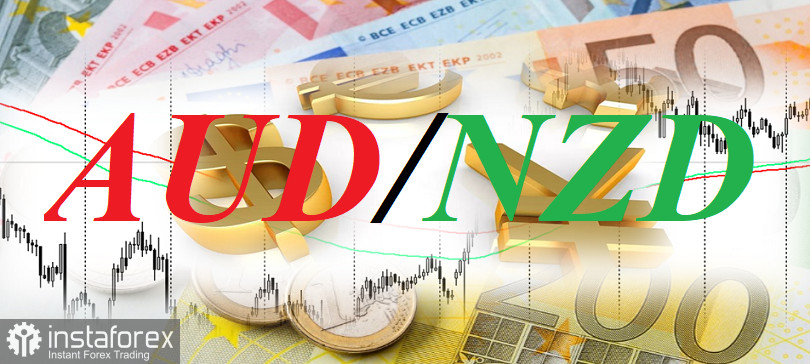
AUD/NZD refers to the category of "cross-pairs" and shows how many units of the national currency of New Zealand (New Zealand dollar) you need to pay for one Australian dollar (Australian national currency). This means that the commodity in the AUD/NZD pair is the Australian dollar, and the New Zealand dollar is the second currency in the pair, which buys the base currency (Australian dollar).
Features of trading the AUD/NZD pair
1. Both the New Zealand dollar and the Australian dollar are highly liquid currencies. Almost at any time for each of them there will be both bulls and bears. The AUD/NZD pair is actively traded throughout the trading day. The highest peak of trading activity for the AUD/NZD pair and the largest trading volumes fall on the Asian session.
2. The Australian dollar, along with the Canadian and New Zealand dollars, has the status of a commodity currency. Australia's most important export commodities are iron ore, coal, liquefied gas, agricultural products, and New Zealand's timber and meat and dairy products. Moreover, up to 20% of the total export of New Zealand is the export of dairy products. Therefore, the dynamics of commodity prices has a strong impact on the quotes of the Australian and New Zealand dollars. Australia and New Zealand are the closest trade and economic partners.
3. Australia belongs to the countries with stable developing economies. It accounts for approximately 1.7% of world GDP, about eight times more than New Zealand's GDP. The economies of the two countries are considered stable and steadily developing.
4. The most important trade and economic partners of New Zealand and Australia are the countries of the Asia-Pacific region, primarily China and Japan. The release of macroeconomic statistics from these countries and political events within these countries directly affect the dynamics of the AUD/NZD pair and the quotes of the New Zealand and Australian dollars.
5. The surge in trading volatility for the AUD/NZD pair falls, in addition to the release of news of a political nature, during the period of release of important macroeconomic indicators for Australia, New Zealand, China, Japan, and the USA. The following macroeconomic factors and indicators give the greatest volatility to the AUD/NZD pair:
- Decisions of the central banks of Australia, New Zealand, China, Japan, the United States regarding monetary policy in these countries,
- Speeches by the heads of the Fed, RBA, RBNZ, Bank of Japan, National Bank of China,
- Release of minutes from the latest meetings of the Fed, RBA, RBNZ, Bank of Japan, NBC on monetary policy issues,
- Data from the labor market of Australia, New Zealand, USA,
- Data on GDP of Australia, New Zealand, China, Japan, USA,
- Release of inflation indicators for Australia, New Zealand, China, Japan, USA.
Strong macroeconomic data in New Zealand or Australia lead to the strengthening of the New Zealand or Australian dollar, respectively, as contribute to the growth of "tough sentiment" of the central banks of New Zealand or Australia regarding interest rate hikes. And this is a positive factor for the national currency, which leads to an increase in its value.
6. The intraday volatility of the AUD/NZD pair fluctuates during different periods of the year. On average, it is 90-100 points, but it can rise sharply during periods of release of important macroeconomic indicators for New Zealand, Australia, as well as for their trade and economic partners China, Japan, and the United States.
 English
English 
 Русский
Русский Bahasa Indonesia
Bahasa Indonesia Bahasa Malay
Bahasa Malay ไทย
ไทย Español
Español Deutsch
Deutsch Български
Български Français
Français Tiếng Việt
Tiếng Việt 中文
中文 বাংলা
বাংলা हिन्दी
हिन्दी Čeština
Čeština Українська
Українська Română
Română

